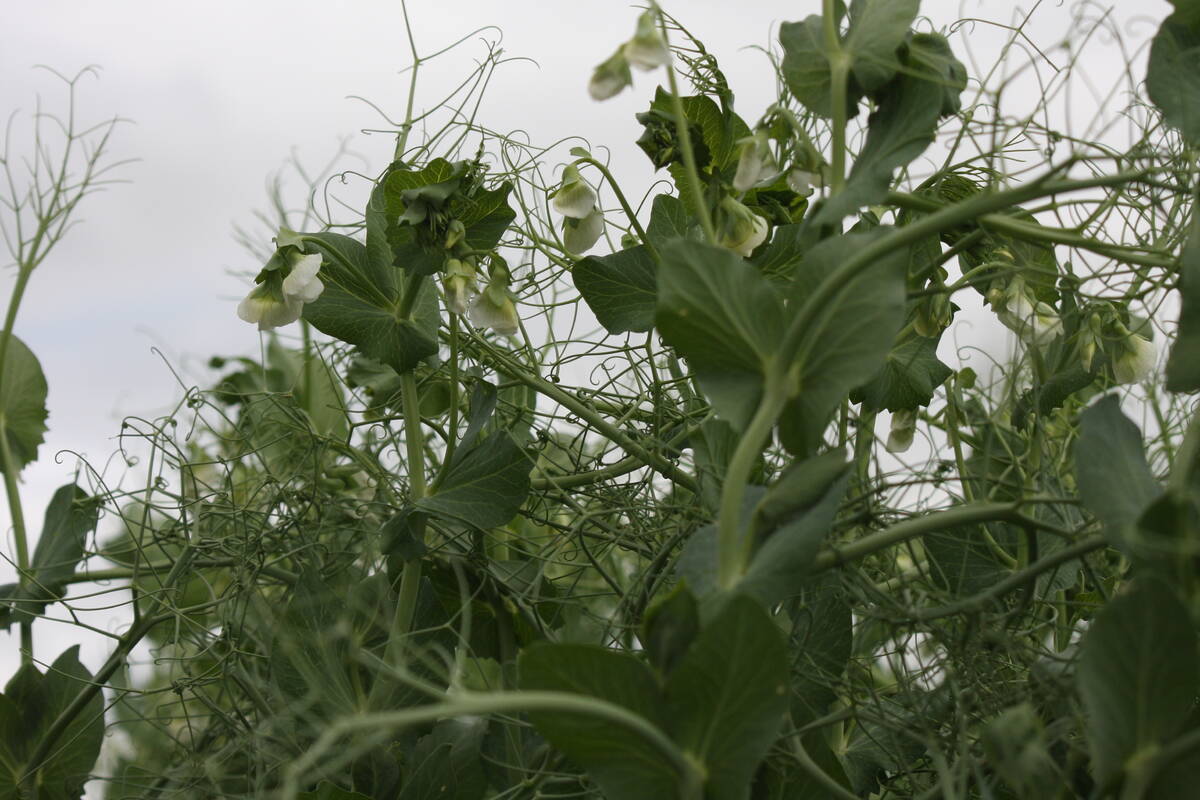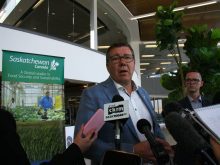Rural Canadian communities have a simple choice over the next few decades – find a way to attract immigrants or cease to exist, says a Statistics Canada researcher.
By 2030, it’s expected that deaths will exceed births in Canada, said Ray Bollman, who works in the rural research group with Statistics Canada. That means the only source of population growth will come from immigration.
The importance of attracting newcomers is more acute for rural communities because in the last two decades the vast majority of immigrants chose to settle in Canada’s big cities.
Read Also

High pea yields shock farmers
There is going to be a massive pea carryout at the end of this crop year.
“Most immigrants in rural Canada arrived 20 years ago or more,” said Bollman during a panel discussion on rural immigration at the Canadian Rural Revitalization Foundation conference in Brandon Oct. 14-16.
In 2006, based on Canadian census data, immigrants made up approximately 5.3 percent of the population in small towns and rural areas, Bollman told an audience of government policy-makers and academics.
By contrast, 23 percent of all people were immigrants in Canada’s large urban areas in 2006.
As a whole, rural Manitoba failed to draw its fair share of immigrants, but a few towns in Manitoba were able to compete with Montreal, Toronto and Vancouver.
Between 2001 and 2006, more than 2,300 immigrants moved into Winkler, nearly 2,100 made Steinbach their home and 950 newcomers moved into Brandon.
Those newcomers were attracted by employment opportunities in those towns, but attracting immigrants is only one part of the equation, said Sandy Trudel, economic development officer for the City of Brandon.
Rural communities also have to invest in services that persuade immigrants to stay, said Trudel, who sat on the immigration panel at the conference.
“We’re building a long-term future with these individuals,” said Trudel, citing people from Central America, Colombia and China who moved to Brandon to work at Maple Leaf Foods and other industries in the city.
“In 2007, it jumped to 650 (people coming to the city)…. And in 2009, we welcomed 1,149 newcomers to the community.”
Trudel said immigrants typically first arrive alone. But a year or so later, families follow the worker to Brandon, which boosts the immigrant population substantially.
Investing in immigrants has included English as an Additional Language programs at Brandon schools, English classes for adults at night and a list of other services to help families adjust to life in Canada.
“These are all the building blocks of a welcoming community. And as we become a welcoming community, the numbers continue to grow, so it’s almost a self-fulfilling prophecy,” Trudel said.
“Of course there have been challenges…. But probably the most rewarding thing that has happened in this community is being able to watch the community positively respond to those challenges.”
Civic and rural leaders claim that locals want to engage and integrate recent immigrants, but Karla Ortega finds prospective newcomers are welcome in Brandon up to a point.
“There are two worlds (in Brandon),” said Ortega, a Mexican immigrant who owns a downtown grocery store that specializes in imported foods, primarily from Latin America.
Ortega, who has been in Brandon for five years, said there are clear lines in the community around job and identity. Immigrants work at the Maple Leaf plant and long-term Brandon residents are employed in professional jobs.
The community is welcoming and helpful when a newcomer arrives to take a job at the hog plant, she said. But if an immigrant wants to apply for a job as a loan officer at a local bank, there are social barriers in the way.
“You have to know someone to get (such) a job,” Ortega said. “They are focused on a sector (for immigrants).”
On top of language services, rural community leaders have to address other issues when immigrants arrive.
Some are concrete, like affordable housing, but others include tolerance, acceptance and integration.
“Immigrants are grappling with the question: how do I become engaged (with the community),” said Balfour
Spence, a Brandon University professor. “The community is asking, how do we engage with immigrants.”
A city of 50,000, like Brandon, may have the financial resources to ease immigrants into Canadian life. Smaller towns do not have money to hire full-time translators.
Several panel members suggested that volunteers are part of the solution in small towns. Churches and other groups would have to step up to help immigrants feel welcome and become part of the community.
But that’s easier said than done, said Bonnie Proven, a resident of Minnedosa, Man.
“The churches are having difficulty even keeping the church open,” she said.
“Policy level people, at federal, provincial and municipal, have to say, OK, if we’re going to increase immigration in Manitoba from 10,000 per year to 20,000 per year … you can’t expect that the volunteers are going to be able to step up to the plate.”
Proven wants to see more immigrants and diversity in rural Canada, but if rural Canada needs newcomers to remain, there must be government funding in place.
In addition, she said Canada should allow more refugees into the country because its history is founded on people seeking a safe haven from political and religious persecution.
“Prairie Canada … was built by individuals … who in most cases were, broadly speaking, political refugees.”
Although Ortega is frustrated by the defined roles in the community, she said conditions have improved in Brandon.
“Edmonton is used to it (having a large immigrant population),” said Ortega, who lived in Edmonton before moving to Brandon.
She is confident that conditions will continue to improve and immigrants will have more economic and social opportunities.
“We’ll see (what happens) five years from now.”















